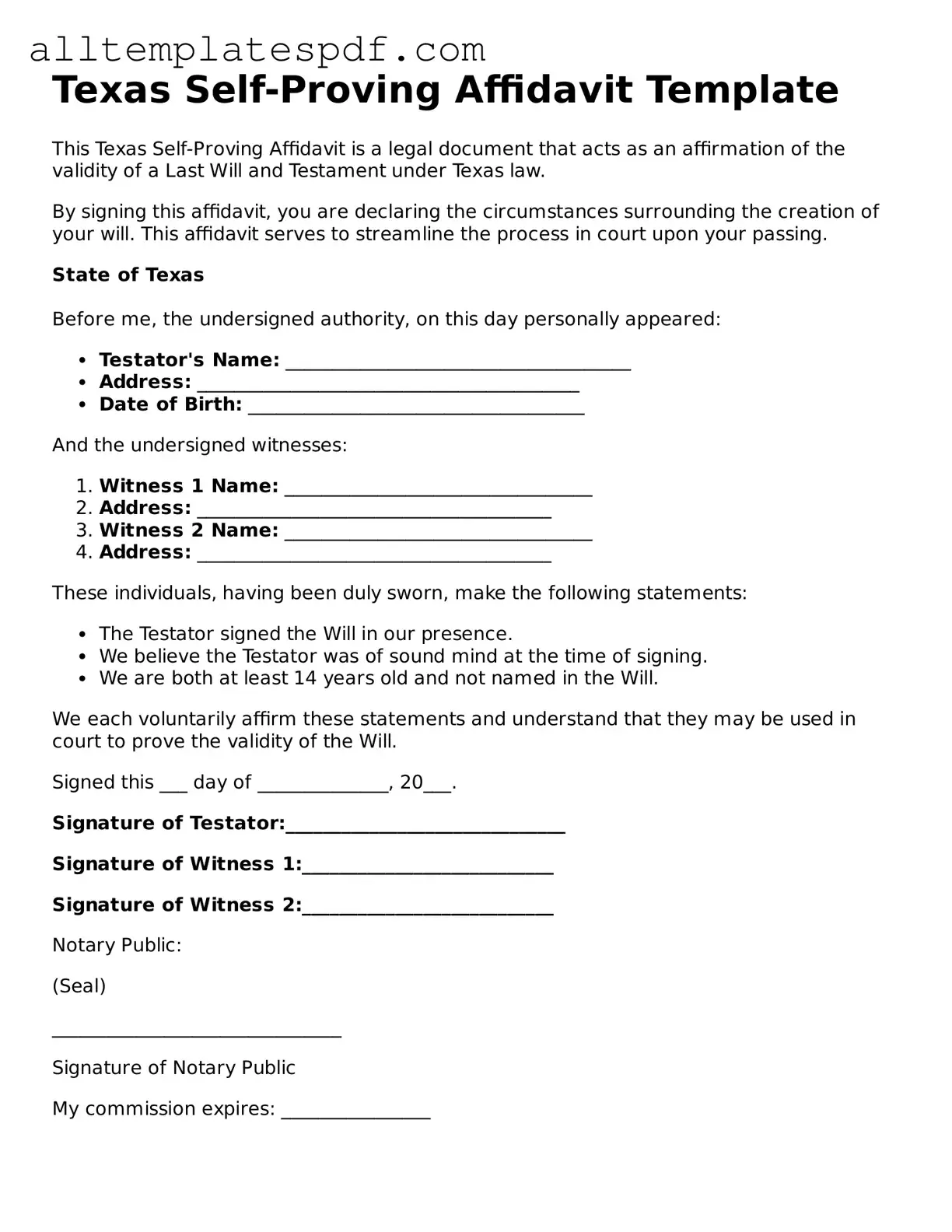Filling out the Texas Self-Proving Affidavit form can be straightforward, but several common mistakes can lead to complications. One frequent error is failing to include the date of execution. This date is crucial as it establishes when the affidavit was signed, which can affect the validity of the will.
Another mistake involves not having the required witnesses present during the signing. The Texas Self-Proving Affidavit must be signed in the presence of two witnesses. If this step is overlooked, the affidavit may not hold up in court.
Individuals sometimes neglect to verify the identities of the witnesses. Witnesses must be competent and not beneficiaries of the will. If a witness is a beneficiary, this could invalidate the affidavit, leading to potential disputes.
Inaccurate personal information is another common issue. It is essential to provide correct names, addresses, and other identifying details for both the testator and the witnesses. Errors in this information can cause confusion and delays.
People may also forget to sign the affidavit themselves. The testator's signature is a critical component of the affidavit, and without it, the document lacks authenticity and may not be recognized.
Failing to use the correct form can lead to problems as well. The Texas Self-Proving Affidavit has specific requirements that must be met. Using an outdated or incorrect version of the form can result in legal challenges.
Another mistake is overlooking the notarization requirement. The affidavit must be notarized to be valid. Without a notary's signature and seal, the document may not be enforceable.
Some individuals fail to keep copies of the completed affidavit. Retaining copies is essential for record-keeping and can help resolve any disputes that arise regarding the will in the future.
Lastly, people may not understand the implications of signing the affidavit. It is important to recognize that by signing, individuals affirm that the will was executed properly. Misunderstanding this responsibility can lead to unintended legal consequences.
